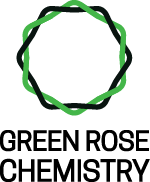We spend about 87% of our time indoors between home, work, and shops. It’s easy to forget about the effects this can have on health, but the impact is real. The practice of healthy building addresses this by creating safer built environments – for us, both physically and mentally, and for the planet.
While green chemistry may seem far removed from healthy building, the two are actually closely connected. Sustainable chemistry innovation is critical to creating the materials we need to build safe, healthy indoor spaces.
Let’s take a closer look at the basics of healthy building, and how green chemistry can help.
The principles of healthy building
Healthy building includes aspects of physical, mental, and environmental health. All three are important, but green chemistry intersects most strongly with the physical and environmental aspects. We will consider those in this article, leaving mental health to the experts in that field.
Physical health
Indoor air quality and green chemistry
The chemicals in our surroundings strongly impact our physical health. Indoor air quality is very important for wellbeing, and there’s plenty of factors that can cause it to deteriorate:
- Paints and coatings release VOCs (volatile organic compounds) over time, even after the “new paint smell” fades. In fact, only 50% of VOCs are released over the first year of use. For conventional paints, the VOCs are largely ethanol, butyl acetate, xylene, and white spirit (a petroleum distillate). Green chemistry can provide water-based or safer solvent formulations.
- Damp and mould can cause asthma attacks and allergic reactions, and can produce toxic and irritant substances. Safe preservatives can reduce mould build-up in natural materials.
- Dust can easily be inhaled, causing allergic reactions, carrying viruses, and collecting chemicals that make their way into our bloodstream. In industry, dust contains small particles of the materials being processed, such as wood, sand, and asbestos.
- Radon comes out of rock and soil across the UK, so it is in every building, but usually in low quantities. High radon levels are associated with lung cancer. UKradon offers information and purchasable radon measurement kits.
Hazardous building materials
Many dangerous building materials, such as asbestos and lead, are discontinued from use. However, this does not mean that they have disappeared entirely. They’ll still be lurking in buildings constructed using them unless they have been removed professionally. Other potentially hazardous materials are still in use, such as mineral wool for insulation which may increase risk of Chronic Obstructive Pulmonary Disease (COPD).
Green chemical flame retardants
Fire-safe materials and procedures are essential to the construction of safe buildings, particularly in light of the Grenfell Tower fire in 2017. In addition to fire detection and suppression systems, flame retardant materials are critical to improving safety. However, many flame retardant chemicals are both harmful to human health and very persistent in the environment. Safe, green flame retardants are very much in demand for healthy building, and researchers are working hard to develop new options.
Environmental health
Reducing emissions with green chemistry
In the face of the climate crisis, reduction or elimination of CO2 emissions is a large part of environmentally healthy industrial practices. The building industry was responsible for 38% of carbon dioxide emissions in 2019. A large portion of these emissions come from concrete. Methods for reducing the carbon footprint of concrete production are a hot topic of green chemistry research, while assessing alternatives to concrete can provide a different route to greener buildings.
Additionally, switching to renewable energy sources can negate the CO2 emissions of a building’s electricity use. While sustainable chemistry can’t do quite as well as nature, we have made major advances in harnessing solar power in the last decade. Solar panels are readily available for installation and, contrary to popular belief, work well on cloudy days and through the winter.
Building insulation and green chemistry
Proper insulation of buildings, including double-glazed windows, helps keep heat in and reduces energy usage during a building’s lifespan. While most people don’t think of their windows as chemicals, glass manufacturing is a chemical process. Innovations in glass production and coating can reduce material usage, improve thermal efficiency, and reduce condensation to help windows last longer.
Green chemical building materials
Another facet of environmentally healthy building is the use of sustainable materials. Focusing on low-impact, renewable materials that are abundant or easy to grow presents a huge improvement over carbon-intensive mined or petrochemical materials. Reducing the use of plastics can be a sustainable choice, but in some cases plastics improve performance and have a net positive impact.
Healthy building materials
Understanding basic principles is all well and good, but the most exciting part about healthy building (to us, anyway!) is learning about the green chemistry innovations that make it possible. Let’s look at some examples of recent sustainable chemistry advances for healthy building.
Making use of biology
Sometimes the greenest chemistry is biology. We can let nature do the heavy lifting, taking advantage of the amazingly complex functional materials that it creates.
Sheep’s wool insulation
Sheep’s wool is a natural replacement for fibreglass (mineral wool) insulation. It can perform similarly, or sometimes better, in thermally insulating buildings, and it’s a renewable material! Its use could also help economic development and quality of life for farmers and rural communities.
Surprisingly, wool can also absorb and break down indoor air pollutants – it improves indoor air quality, in contrast to mineral wool’s hazards. The linked life cycle analysis of sheep’s wool insulation shows that its production has little negative environmental impact, but compared to mineral wool may need to be transported farther to specialised insulation manufacturers. It is more expensive than mineral wool, but it’s likely worth it for the difference in safety and sustainability.

Mycelium bricks
Mycelium (the behind-the-scenes part of mushrooms) has an unexpected potential application in sustainable construction – bricks. They have much lower compressive strength than regular bricks (0.2 MPa vs. 28 MPa), but their density is low enough to compensate (43 kg m-3 vs. 2400 kg m-3). This means they can still be stacked up to 40 feet high (over 12 metres), but shouldn’t be used in load-bearing structures. Instead, they’re best used as insulation or for interior walls. “Hy-Fi” in Manhattan made a big statement by using these mycelium bricks to achieve a nearly zero carbon emission construction.
These bio-bricks are highly sustainable, as they can be grown locally in five days, using agricultural waste as feedstock. This saves on energy-intensive manufacturing and transport of heavy bricks from afar. At the end of life, the mycelium can be composted, returning its nutrients to the natural cycle.
Green chemistry improvements
While biobased materials have incredible potential, nature can’t do all the work for us. Clever application of green chemistry principles gives us the opportunity to improve upon what we already use, developing next-generation building materials and processes that are better for humans and the environment.
Alternative solvents for paints and coatings
The familiar smell of drying paint gives a hint of the solvents it releases into indoor environments. Only about 50% of VOCs (https://greenseal.org/certification/rcp_call_for_comments_04-14-06.pdf) (volatile organic compounds such as ethanol, butyl acetate, and xylene) are released within the first year after application, with the other half being slowly released over time.
An increasingly popular alternative is water-based paints, in which the traditional VOCs are replaced by water. These are safer and can be lower-impact than solvent-based coatings, but require significant product development and some adjustments for the end user. They can be painted directly over oil-based paints, but the opposite doesn’t work; if you want to change back to oil-based paints in the future, you cannot paint them directly onto water-based paint.
Water-based paints have advantages and disadvantages:
- better performance on outdoor surfaces and in humid rooms
- can be more difficult to apply
- less durable to physical contact
- can hold colour longer
- easier to clean from brushes
- mistakes made during painting are easier to reverse
In addition to water-based options, many paint manufacturers are developing biobased formulations which use naturally-derived polymers and solvents. While this doesn’t necessarily mean they are safer, coatings made from renewable resources are often lower-impact. Formulating with biobased chemicals can be challenging, but is very much in demand in many markets.
Safer flame retardants
Flame retardant coatings “prevent the start or slow the growth of fire”. Unfortunately, conventional ones have the same VOC problem as paints. Green flame retardant alternatives can be made from cellulose nanofibrils (CNF) and nanoplatelets of anionic vermiculite (VMT) clay, maintaining fire protection while reducing indoor air pollution. The composite material forms a layer that reduces the surface’s permeability to oxygen, making it harder for the material to catch fire.
Building with ocean plastic
640,000 tonnes of fishing nets end up dumped in oceans each year – they make up roughly 10% of ocean litter. Using them to reinforce concrete provides an opportunity to reduce marine pollution and to build something new from waste. While it requires further study, research has shown near surface mounted reinforcement (NSMR) by fishing nets can reduce or prevent cracks, and allow the structure to bear a higher load.

Examples of healthy buildings
So where have these principles been put into action? Well, we already mentioned “Hy-Fi”, but there are others!
The National Trust’s HQ in Wiltshire, England, is a stellar example of healthy building. Water-based paints and PVC-free linoleum have been put to use, and they’ve even had their carpets made of wool from sheep living on the National Trust’s own grounds. 30% of their annual power demand is covered by solar panels.
Unisphere in MD, USA, is a net-zero energy building, which means that all energy used in construction is offset by the renewable energy produced on-site (or through other specific means). It puts into use a range of methods to reduce energy use, and to generate its own. Unisphere won the Engineering News Record Best Green Project award in 2019, and was also a finalist in their award for the Project of the Year.


